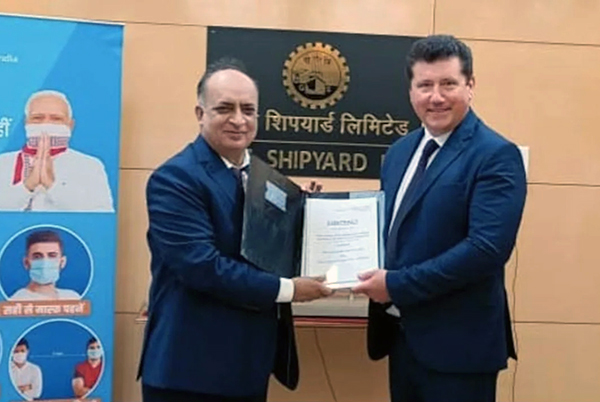

The Ukraine crisis outcome is uncertain and Russia’s future status as a weapons provider means looking at alternatives.
India is carrying out a detailed assessment of its security interests as a result of the Russia-Ukraine War. Prime minister Narendra Modi and the National Security Advisor Ajit Doval have closely monitored the situation and reviewed the situation and options for India with the top security brass.
India has been a traditional recipient of the Russian military hardware while in the last few years, it has been buying a large amount of American weaponry too. Ukraine is also a source of a lot of military equipment and spares including the equipment for the Antonov-32 aircraft.
Till a few years ago, India was relying solely on Russia for its military requirements and over 70 per cent of its hardware was of Russian origin. However, with an aim of avoiding putting all eggs in one basket, India started buying American equipment too with over USD 20 billion procurements done in the last 15 years.
The more immediate crisis is that diverse Russian materiel is awaiting delivery to India, for which substantial payments have already been made, alongside continually needed spares and components for the in-service kit to keep the military adequately operational.
Dependence on Ukraine
For India, Ukraine was becoming a vital partner. New Delhi had chosen to increase its reliance on Ukraine in the repair and modernization of Soviet weapons, which constitute a large part of all armaments of the Indian armed forces.
New Delhi’s decision to partner with Ukraine was a consequence of Russia’s inability to fulfill part of its Indian contracts because of the breakdown of technical cooperation between Russia and Ukraine after Russian aggression in Crimea and the Donbass. Moscow’s lack of access to the Ukrainian defense industry was costing the Russian defense sector dearly.
The Kremlin was extremely concerned about this, since the weakening of its position on the Indian market was not only a loss of profitable contracts, but also of geopolitical influence in an extremely important region.
Russia’s reduced presence in India — resulting in part from Ukrainian defence competition —generated a vacuum that would inevitably be replaced by U.S. influence.
Russia failed to increase the quality of its weapons systems and provided regular deliveries of defective products. For example, more than half of the 210 Su-30MK fighter jets bought by Russia are inactive due to maintenance problems.
The Kremlin tried to discredit Ukraine as a reliable and honest partner. Russian propaganda and information campaigns were regularly carried out to spread the false narrative that Ukraine and its military-industrial complex produced defective products, were massively corrupt and engaged in illicit arms trafficking around the world.
The Ukrainian defence industry was steadily expanding its presence on the Indian armaments market — replacing Russia.
Contracts with Ukraine
There were 400 contracts between India and Ukraine. The most promising areas of cooperation included:
- Modernizing of Indian tanks and armored vehicles and equipping them with guided missiles.
- Modernizing Indian radars and air defense assets.
- Designing and manufacturing Indian ships of various classes.
- Supplying components for existing Indian ships and submarines.
- Maintaining Indian aircraft and helicopters.
- Implementing joint Ukrainian-Indian research and development projects.
A large part of the defence design bureaus and the manufacturing facilities of the erstwhile Soviet Union are now in Ukraine. Ukraine had also shown interest in participating in other hi-tech programmes of the Indian Armed Forces, such as in supply of anti-UAV systems and upgrade programme of tanks which are in the pipeline.
Russia’s aggression has hit a multiplicity of Ukrainian contracts, like the upgrade of around 60 IAF Antonov An-32 ‘Cline’ transport aircraft, the supply of critical R-27 air-to-air missiles for Su-30MKIs and the transfer of eight Zorya-Mashproekt M7N1EW gas turbines to power the Navy’s four under-construction Talwar-class frigates. Two of these were being built at Russia’s Yantar Shipyard and two at Goa Shipyard Limited (GSL), under a transfer of technology pact. The Ukrainian engines for the former two warships had reportedly been transferred to Russia, but not the ones intended for GSL.
In the past too, Russia-Ukraine conflicts have led to delays in the modernization of the Indian Air Force’s AN-32 transport fleet. In 2009 India signed a $397.7 million contract with Ukraine for the upgrade of the 105 Soviet Era AN-32 aircraft. However, in 2014, the Crimean crisis ruptured ties between Ukraine and Russia, throwing the contract in jeopardy. India has signed several high profile defence deals with both Russia and Ukraine.
The extent of damage to Ukraine’s military infrastructure is yet to be ascertained. It has to be assessed if the production lines for supply of spares for the various equipment and weapon systems in use with the Indian Armed Forces are operational or have seen damages in the conflict.
Some of the critical equipment that get their spares from Ukraine include the 130mm medium guns, spares for T-72 tanks as well as the T-90 tanks, the OSA-AK surface-to-air missile system, and Tunguska anti-aircraft weapon system.
Unlike Russia, payments to Ukraine will not be as affected since the country is paid in dollars and not facing any sanction.
Ukraine was also aiming to bag a contract from India on the upgrade of Smerch multiple rocket launcher system.
















